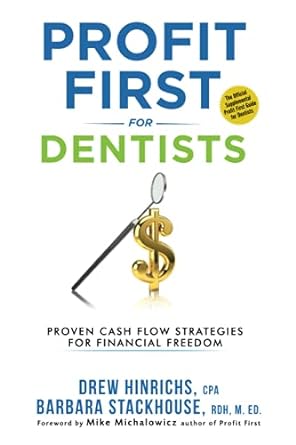Answered step by step
Verified Expert Solution
Question
1 Approved Answer
The following data relate to the operations of Shilow Company, a wholesale distributor of consumer goods: Current assets as of March 31: Cash Accounts receivable
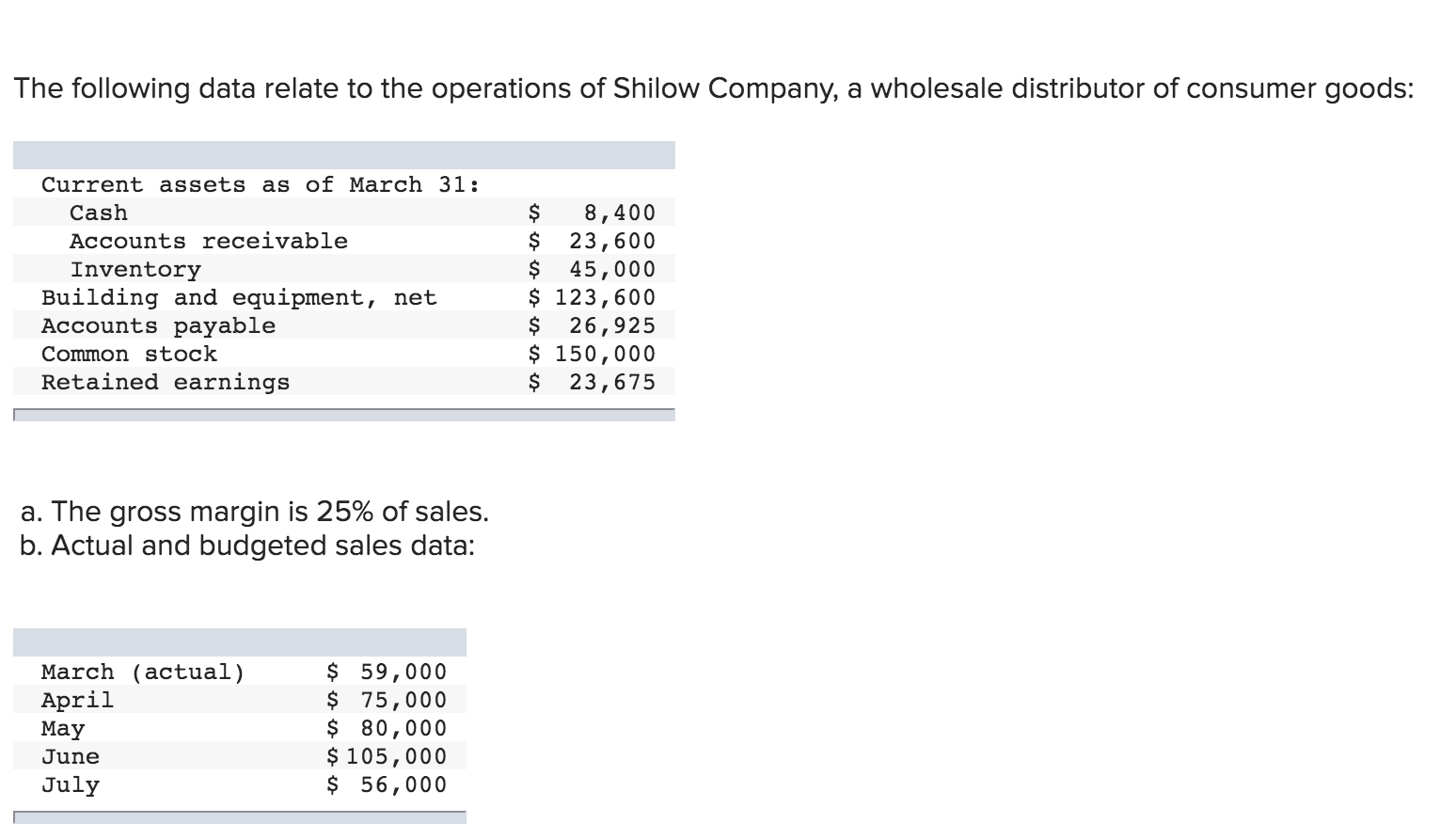
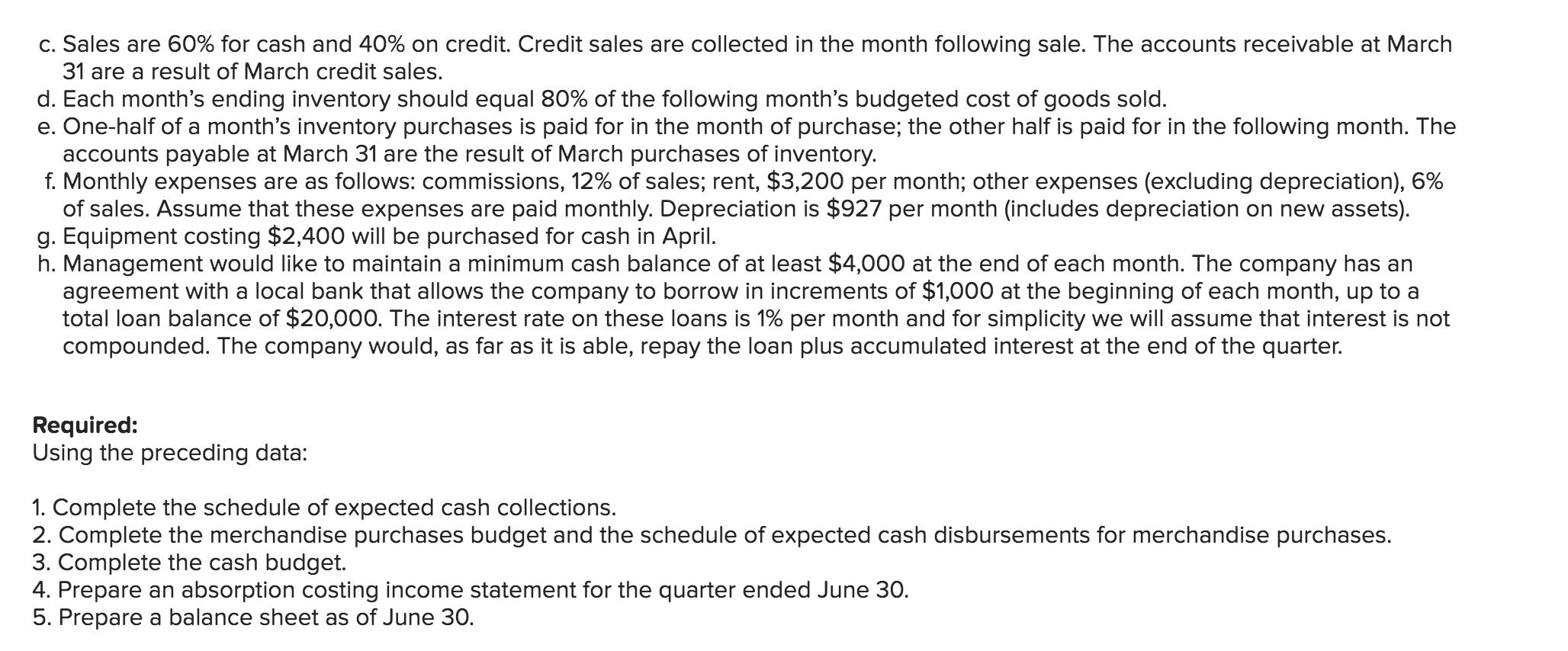
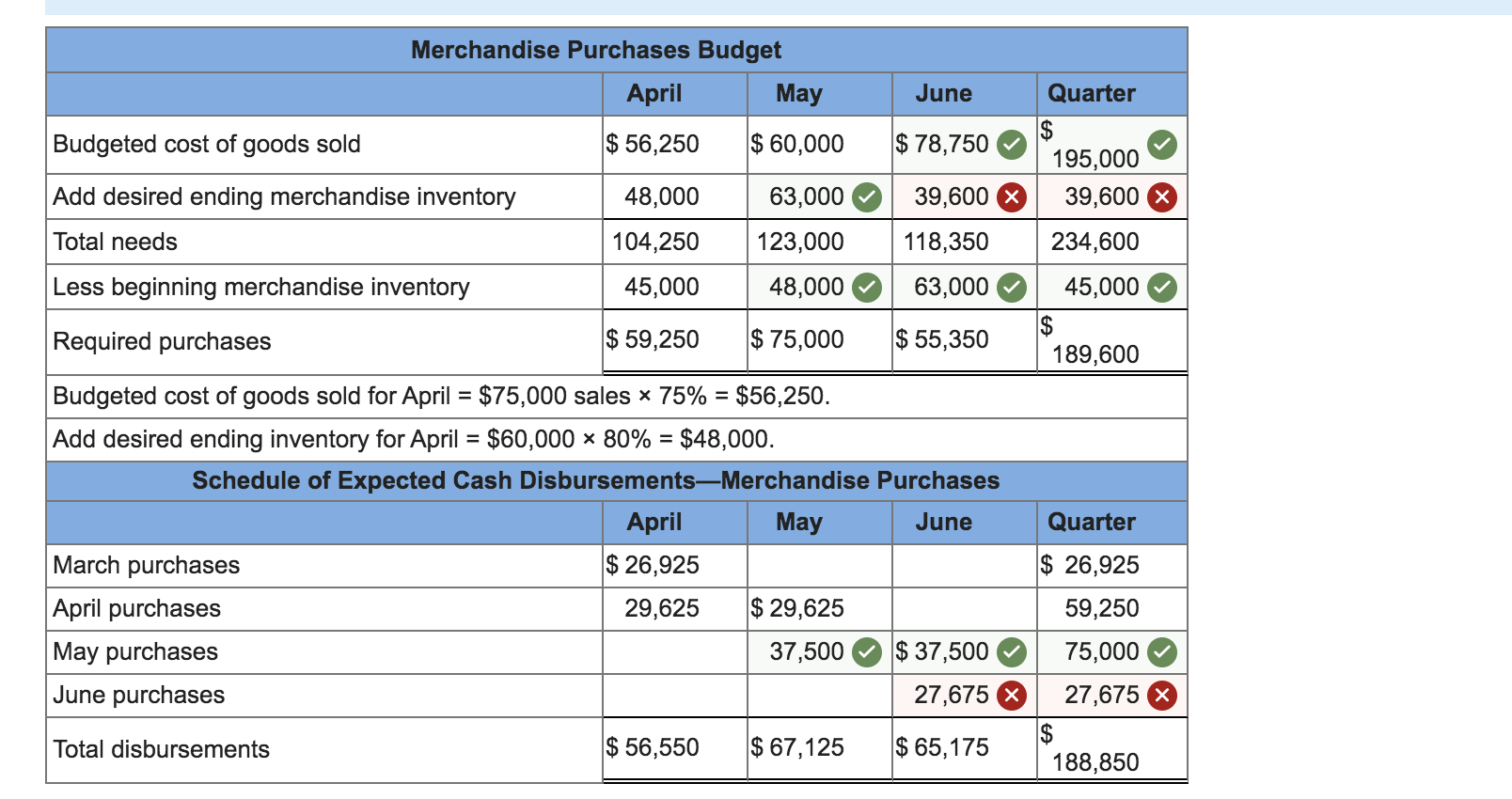

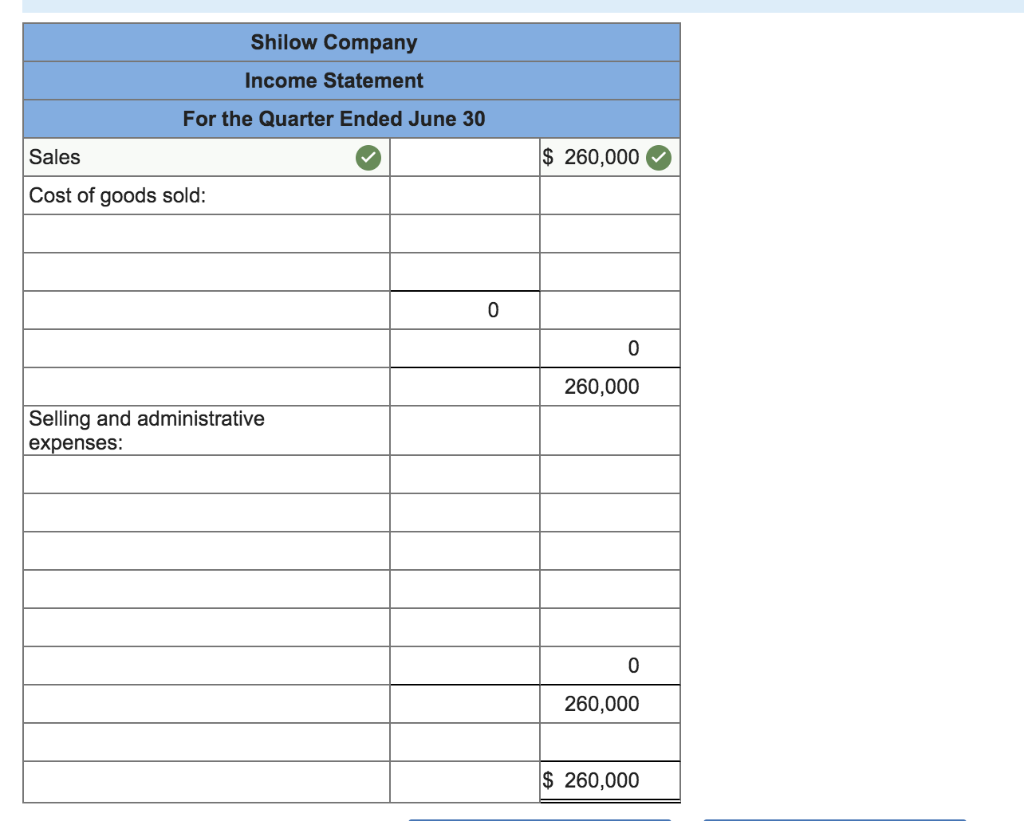
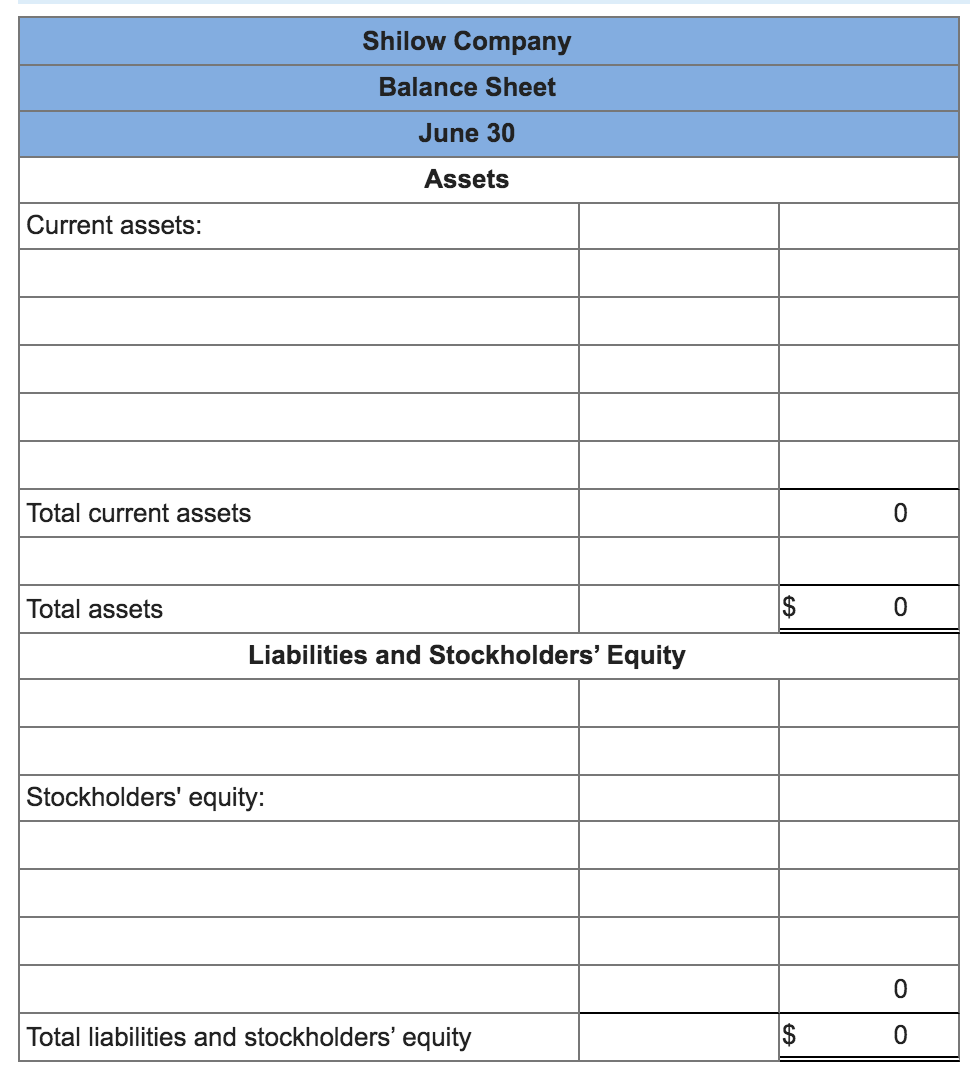
The following data relate to the operations of Shilow Company, a wholesale distributor of consumer goods: Current assets as of March 31: Cash Accounts receivable Inventory Building and equipment, net Accounts payable Common stock Retained earnings $ 8,400 $ 23,600 $ 45,000 $ 123,600 $ 26,925 $ 150,000 $ 23,675 a. The gross margin is 25% of sales. b. Actual and budgeted sales data: March (actual) April May June July $ 59,000 $ 75,000 $ 80,000 $ 105,000 $ 56,000 C. Sales are 60% for cash and 40% on credit. Credit sales are collected in the month following sale. The accounts receivable at March 31 are a result of March credit sales. d. Each month's ending inventory should equal 80% of the following month's budgeted cost of goods sold. e. One-half of a month's inventory purchases is paid for in the month of purchase; the other half is paid for in the following month. The accounts payable at March 31 are the result of March purchases of inventory. f. Monthly expenses are as follows: commissions, 12% of sales; rent, $3,200 per month; other expenses (excluding depreciation), 6% of sales. Assume that these expenses are paid monthly. Depreciation is $927 per month (includes depreciation on new assets). g. Equipment costing $2,400 will be purchased for cash in April. h. Management would like to maintain a minimum cash balance of at least $4,000 at the end of each month. The company has an agreement with a local bank that allows the company to borrow in increments of $1,000 at the beginning of each month, up to a total loan balance of $20,000. The interest rate on these loans is 1% per month and for simplicity we will assume that interest is not compounded. The company would, as far as it is able, repay the loan plus accumulated interest at the end of the quarter. Required: Using the preceding data: 1. Complete the schedule of expected cash collections. 2. Complete the merchandise purchases budget and the schedule of expected cash disbursements for merchandise purchases. 3. Complete the cash budget. 4. Prepare an absorption costing income statement for the quarter ended June 30. 5. Prepare a balance sheet as of June 30. Quarter 195,000 39,600 X 234,600 45,000 IS 189,600 Merchandise Purchases Budget April May June Budgeted cost of goods sold $ 56,250 $60,000 $ 78,750 Add desired ending merchandise inventory 48,000 63,000 39,600 Total needs 104,250 123,000 118,350 Less beginning merchandise inventory 45,000 48,000 63,000 Required purchases $ 59,250 $ 75,000 $ 55,350 Budgeted cost of goods sold for April = $75,000 sales * 75% = $56,250. Add desired ending inventory for April = $60,000 ~ 80% = $48,000. Schedule of Expected Cash Disbursements-Merchandise Purchases April May June March purchases $ 26,925 April purchases 29,625 $ 29,625 May purchases 37,500 $ 37,500 June purchases 27,675 Total disbursements $ 56,550 $ 67,125 $ 65,175 Quarter $ 26,925 59,250 75,000 27,675 X 188,850 Shilow Company Cash Budget April May 8,400 $ 4,350 68,600 78,000 77,000 82,350 Beginning cash balance $ June 4,625 95,000 99,625 Quarter $ 8,400 241,600 250,000 Add collections from customers 56,550 16,700 Total cash available Less cash disbursements: For inventory For expenses For equipment Total cash disbursements Excess (deficiency) of cash available over disbursements Financing Borrowings Repayments 67,125 17,600 0 84,725 65,175 22,100 0 87,275 2,400 75,650 188,850 X 56,400 2,400 247,650 2,350 1,350 (2,375) L 12,350 Interest 3,000 0 01 3,000 4,350 7,000 0 0 7,000 4,625 0 (8,000) (230) (8,230) 4,120 10,000 (8,000) (230) 1,770 $ 4,120 Total financing Ending cash balance $ $ $ Shilow Company Income Statement For the Quarter Ended June 30 $ 260,000 Sales Cost of goods sold: 260,000 Selling and administrative expenses: 260,000 $ 260,000 Shilow Company Balance Sheet June 30 Assets Current assets: Total current assets Total assets $ 0 Liabilities and Stockholders' Equity Stockholders' equity: Total liabilities and stockholders' equity $ 0
Step by Step Solution
There are 3 Steps involved in it
Step: 1

Get Instant Access to Expert-Tailored Solutions
See step-by-step solutions with expert insights and AI powered tools for academic success
Step: 2

Step: 3

Ace Your Homework with AI
Get the answers you need in no time with our AI-driven, step-by-step assistance
Get Started


